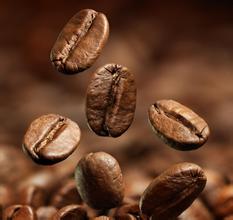Scaa Coffee sensory Test which brand of citric acid is used in devil's water
Scaa Coffee Sensory Test What brand of citric acid is used in Devil's Water?
①1 coffee general knowledge written test, answer 100 multiple-choice questions within 1 hour, correct more than 75 questions can pass.
②3-door taste threshold test refers to the identification of sour, sweet and salty taste. One of them is to find out which of the nine cups of water are sweet, which are sour, and which are salty; one is to distinguish the three concentration levels in each of the three cups of sour, sour, and salty; one is three flavors, three levels, that is, nine solutions, mixed with each other, and then there are eight cups of mixed solutions, asking you to point out which flavors are in these eight cups and what concentration level (may be a mixture of two flavors, or a mixture of three flavors).
③4-door smell bottle smell test, refers to the coffee nose 36 smell bottle. Among them, there are 4 groups according to the causes of taste, so they are tested separately. The test is done by linking 9 bottles on one side and 6 bottles on the other, asking you to point out which of the 9 bottles in one group is the bottle in the other group. Then write down what the specific flavor of the specified 3 bottles is. During the exam, the lights will be turned off, only red light will be turned on, and the bottles will be wrapped in order not to allow candidates to judge by color.
④5-door triangular cup test is 5 rounds, 6 groups per round. 3 cups in each group, 2 of which are the same, 1 cup is different, find out which one is different. Up to one group can be wrong in each round of 6 groups. During the exam, the lights will also be turned off, only the red light will be turned on, and the examinee will not be allowed to observe the coffee powder through the color.
1 door organic acid test, that is, there are 8 groups of coffee, each group of 4 cups, of which 2 cups are added acid (added acid has citric acid, malic acid, phosphoric acid, acetic acid), find these two cups. Then write down what acid was added.
① 1 Roasting identification of samples (by Agtron and students 'sensory ability to observe coffee beans to test whether students understand the roasting degree of SCAA standard samples) is to judge whether they meet SCAA's cup test standards for roasting color by the color of coffee beans and coffee powder
·Appearance characteristics: Green beans appear yellow, tan or reddish brown spots, spots may have a powdery appearance.
·Cup sensory characteristics: diversity: fermentation flavor, turbidity, musty flavor, earthy flavor, chemical irritation and other single or multiple odors mixed.
·Cause: fungal spore invasion infection during harvest, post-treatment and storage, spore growth and development infection in combination with wet and warm conditions·Appearance characteristics: non-coffee impurities, including branches, stones, copper plates, etc.
·Cup sensory characteristics: produce various odors.
·Cause: Poor handling.·Appearance characteristics: Green beans present pale appearance, low specific gravity, floating in water.
·Cup sensory characteristics: Variety: fermented, musty, earthy, rice-stalk or grassy green, or no odor but reduced coffee flavor intensity.
·Causes: Improper post-processing, excessive drying during drying, or long-term storage of shelled beans in high humidity.

Important Notice :
前街咖啡 FrontStreet Coffee has moved to new addredd:
FrontStreet Coffee Address: 315,Donghua East Road,GuangZhou
Tel:020 38364473
- Prev

Double spaghetti concentrate and 150 milliliters of milk.-how many milliliters of spaghetti concentrate?
Double spaghetti concentrate with 150 milliliters of milk-one spaghetti concentrate how many milliliters is suggested: 1. Dark chocolate, which is a perfect match for kung fu coffee, is a classic match in many cafes. two。 Listening to Chopin Mazuka and drinking this kind of espresso is not suitable for listening to more lively pop music. A quiet piano is very harmonious. Double espresso double
- Next

Pacamara Coffee Bean Flavor description Grinding scale Variety treatment method taste Manor
Pacamara Coffee Flavor description Grinding scale Variety treatment Manor Salvadoran Coffee ranks alongside Mexico and Guatemala as the producer of Asa and Merdo, and is fighting for the top one or two in China and the United States with other countries. The highlands of origin are large coffee beans of all sizes, which are fragrant and mild in taste. Like Guatemala and Costa Rica, coffee from El Salvador
Related
- What brand of black coffee is the most authentic and delicious? what are the characteristics of the flavor of the authentic Rose Summer Black Coffee?
- Introduction to the principle and characteristics of the correct use of mocha pot A detailed course of mocha pot brewing coffee is described in five steps.
- Which is better, decaf or regular coffee? how is decaf made?
- How much is a bag of four cat coffee?
- How about four Cat Coffee or Nestle Coffee? why is it a cheap scam?
- Which is better, Yunnan four Cats Coffee or Nestle Coffee? How about cat coffee? is it a fake scam? why is it so cheap?
- How about Cat Coffee? what grade is a hoax? which instant coffee tastes better, four Cat Coffee, Nestle Coffee or G7 coffee?
- Process flow chart of coffee making-Starbucks coffee making process what coffee tastes good at Starbucks
- The top ten best coffee beans in the world Rose summer coffee or Tanzanian coffee tastes good
- Yunnan four cat coffee is good to drink?_four cat coffee is a big brand? four cat blue mountain coffee is fake?

